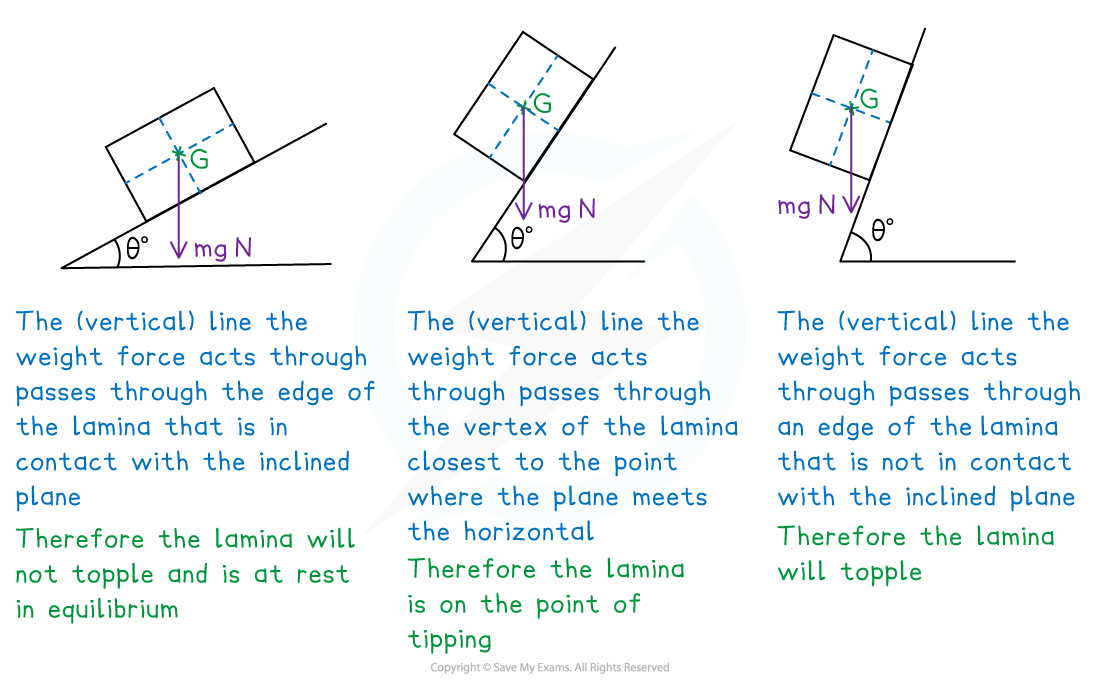Point of Tipping (Edexcel International A Level (IAL) Maths): Revision Note
Exam code: YMA01
Did this video help you?
Point of Tipping
What is meant by point of tipping/toppling?
These types of problems involve a lamina being placed along one of its edges on a rough inclined plane
The (main) modelling assumption here is that the frictional force between the plane and the lamina is sufficient such that the lamina will not slide (or slip) down the plane (regardless of the angle of incline)

How do I solve tipping/toppling problems?
STEP 1 Sketch or add anything useful to a given diagram
Define axes if necessary and add these to your diagram
make the
-axis parallel to the plane
make the
-axis perpendicular to the plane
have the origin (O) at the vertex of the lamina that is in contact with the plane and closest to the point where the plane meets the horizontal (“bottom left”)
Add to the diagram as you progress through the question
STEP 2 Find the position of the centre of mass (G) of the lamina; use your diagram,
axes and symmetry (where possible) to help
The lamina may be a standard shape or a composite lamina
Add the position of the centre of mass to your diagram; also add a downward
vertical line (that weight acts through) but you cannot use your diagram to
accurately determine whether the lamina will topple
STEP 3 Use trigonometry (A new diagram of a right-angled triangle with OG as the
hypotenuse can help) to determine the angle at which the lamina would be
on the point of tipping
STEP 4 Interpret the result in the context of the problem and answer the question accordingly
Worked Example
A symmetrical T-shaped lamina is made from two congruent 12 cm by 4 cm rectangles manufactured from the same uniform material.
The lamina is placed on a plane inclined at an angle of , as shown below.

Determine the maximum angle that the plane can be raised to before the lamina will topple. You may assume that the frictional force between the lamina and the plane is sufficient to prevent the lamina sliding down the plane.

Examiner Tips and Tricks
Whilst a diagram (sketched or given) will help you work through the stages of your solution, you cannot rely on it to accurately determine whether the (downward vertical) line that weight acts through passes through the edge of the lamina in contact with the plane.
If defining your own axes, have the x-axis and the y-axis parallel and perpendicular to the plane, with the origin on the “bottom left” vertex of the lamina.

You've read 0 of your 5 free revision notes this week
Unlock more, it's free!
Did this page help you?